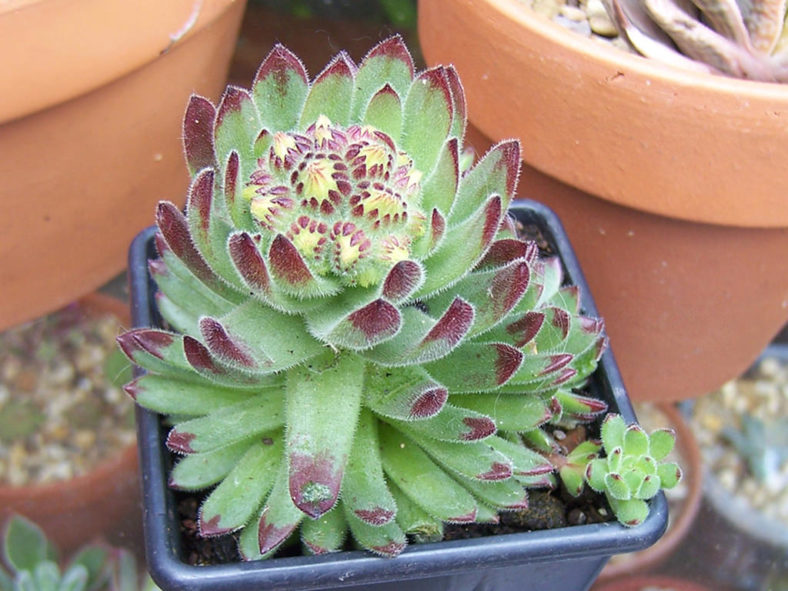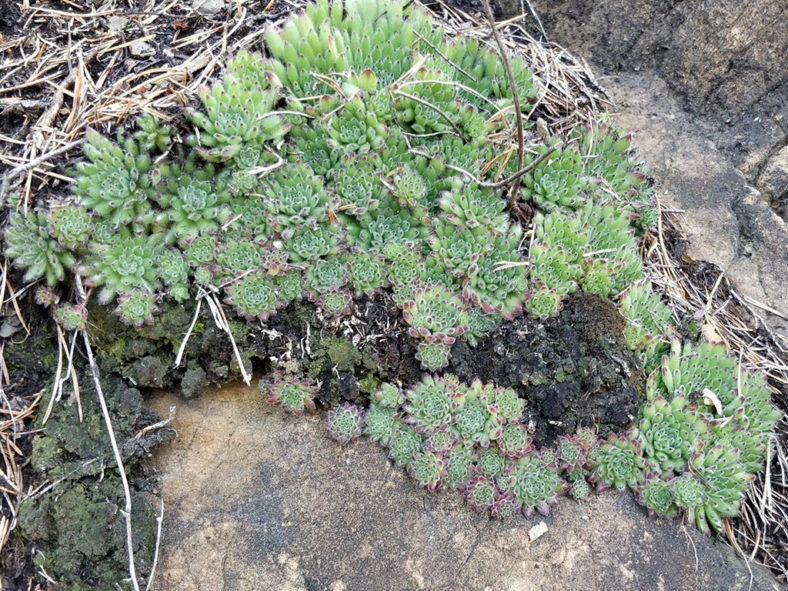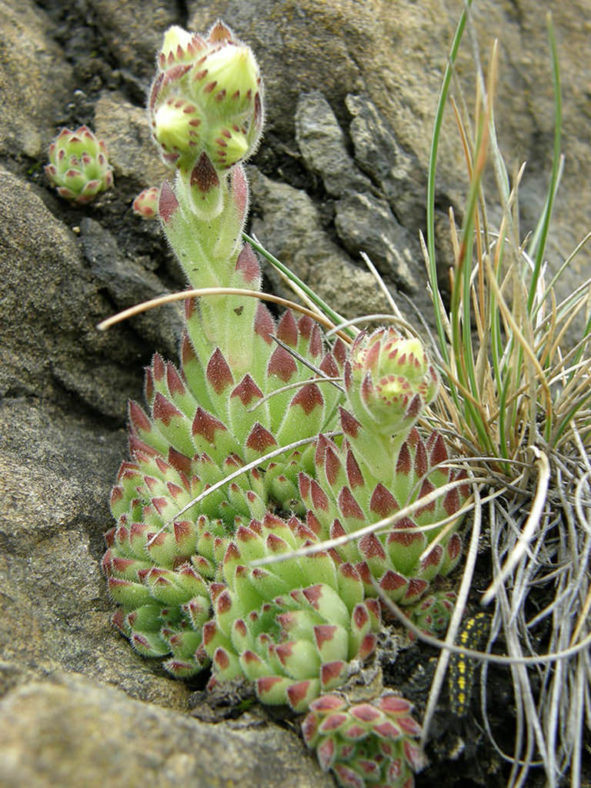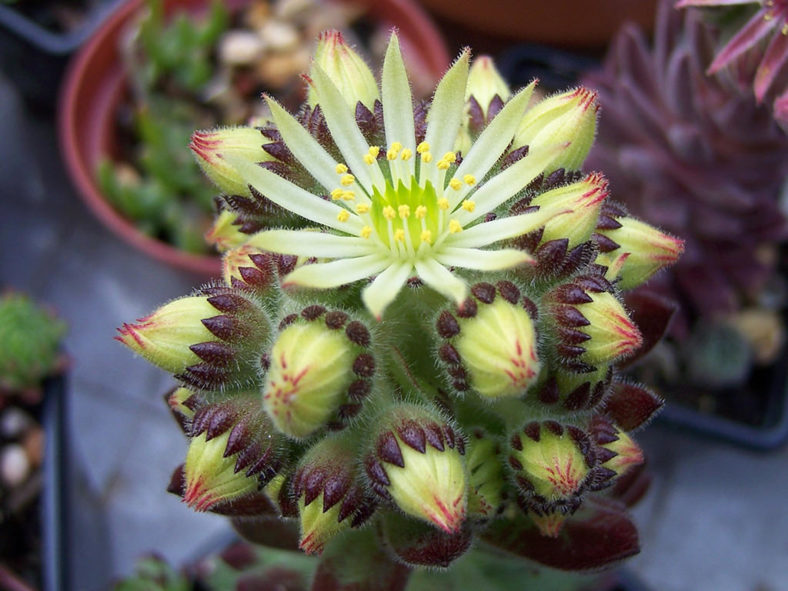Scientific Name
Sempervivum pittonii Schott, Nyman & Kotschy
Common Name(s)
Pittoni Houseleek
Synonym(s)
Sempervivum braunii
Scientific Classification
Family: Crassulaceae
Subfamily: Sedoideae
Tribe: Sedeae
Subtribe: Sedinae
Genus: Sempervivum
Etymology
The specific epithet "pittonii (pronounced pit-TON-ee-eye)" honors Josef Claudius Pittoni (1797-1878), an Austrian botanist and first finder of the species.
Origin
Sempervivum pittonii is endemic to the eastern Alps in Austria. It occurs on serpentine rocks at low elevations in Styria near Kraubath.
Description
Sempervivum pittonii is a small succulent that forms subglobose rosettes of green, densely hairy, tightly packed leaves with dark purple or reddish-brown tips. The rosettes can reach up to 2 inches (5 cm) in diameter and produce offsets on stolons that can grow up to 1.2 inches (3 cm) long, forming dense tufts. The leaves are oblong–spatulate to lanceolate–obovate, measuring up to 1 inch (2.5 cm) long and 0.3 inches (0.7 cm) wide.
The flowers are star-shaped, 9 to 12-merous, with wholly greenish-yellow petals, pale yellow filaments, and yellow anthers. They can reach up to 1 inch (2.5 cm) in diameter and appear in clusters on erect, leafy stalks that can grow up to 8 inches (20 cm) tall in summer. The rosette dies after flowering, but offsets ensure the plant continues.

How to Grow and Care for Sempervivum pittonii
Light: This succulent prefers a spot in full sun but will appreciate some afternoon shade if planted in hot climates. It is unsuitable for indoor growing because it usually does not get as much sunlight as it likes.
Soil: To ensure S. pittonii thrives, it needs a well-draining soil mix with 25 to 50 % sand, gravel, and perlite or pumice. A commercial soil mix for succulents should be sufficient if planted in a pot to keep the roots dry and happy.
Temperature: S. pittonii is perfect for cold climates, as it can handle temperatures down to -30 °F (-34.4 °C). It is also heat-tolerant but prefers average summer temperatures between 65 and 75 °F (18 and 24 °C). USDA Plant Hardiness Zones 4a to 9b, -30 to 30 °F (-34.4 to -1.1 °C).
Watering: Water thoroughly during the spring and summer and allow the soil to dry out between watering. Reduce watering in the fall when S. pittonii enters dormancy. Mature rosettes planted in the ground can overwinter without receiving extra water from you. Plants in containers may need a little water to make it through winter. Never let water sit in the rosette or underneath the pot.
Fertilizing: This succulent grows well without feeding but benefits from a controlled-release fertilizer at the beginning of the growing season. It can also be fertilized once a week with a diluted liquid solution.
Repotting: Plants in containers will benefit from being repotted. Repot as needed, preferably during the spring.
Propagation: The easiest way to propagate S. pittonii is by dividing the offsets produced each season. The best time to divide the offsets is spring or summer, once they are at least a quarter of the mother rosette's size. Propagation by seeds is also used. Sow the seeds in the fall to have seedlings in size for transplanting in spring.
Learn more at How to Grow and Care for Sempervivum.
Toxicity of Sempervivum pittonii
Sempervivums are not known to contain any toxic compounds. Therefore, S. pittonii is considered a safe plant to grow around pets and children.
Links
- Back to genus Sempervivum
- Succupedia: Browse succulents by Scientific Name, Common Name, Genus, Family, USDA Hardiness Zone, Origin, or cacti by Genus
Photo Gallery
Click on a photo to see a larger version.


